#Generative Quantum AI
Explore tagged Tumblr posts
Text
Generative Quantum Eigensolver (GQE): A Quantum Advantage

The promise of quantum computing is its ability to address problems beyond the reach of ordinary computers. The novel approach Generative Quantum AI (GenQAI) is one of the best ways to fulfil that promise. This technique extensively on Generative Quantum Eigensolver.
GenQAI's simple yet successful concept combines AI's flexibility and intelligence with quantum technology's strengths. Using quantum devices to produce data and artificial intelligence (AI) to learn from and control data generation may create a powerful feedback loop that accelerates breakthroughs in many fields.
The quantum processing unit (QPU) generates data that classical systems cannot. Our advantage is that it delivers an AI new, meaningful knowledge that isn't available anyplace else, not just internet text.
GQE Meaning
Based on a classical generative model of quantum circuits, the Generative Quantum Eigensolver (GQE) estimates the ground-state energy of any molecular Hamiltonian 1.
Ground State Energy Search
One of the most intriguing quantum chemistry and materials science topics is calculating a molecule's ground state characteristics. Ground states are molecules' or materials' lowest energy states. Understand this condition to design novel drugs or materials and understand molecular behaviour.
It is difficult to calculate this state properly for systems other than the simplest. Since the number of quantum states doubles rapidly, measuring their energies and testing them brute force is not feasible. This shows the need for a sophisticated ground state energy and chemical characteristic location approach.
This case benefits from GQE. GQE trains a transformer using quantum computer data. The transformer proposes intriguing experimental quantum circuits that may prepare low-energy states. Similar to an AI-powered ground state search engine. The transformer is taught from scratch using component data, making it unique.
It works like this:
Start by running experimental quantum circuits on the QPU.
It measures the energetic quantum states created by each circuit in respect to its Hamiltonian.
A transformer model with the same design as GPT-2 uses such metrics to improve its outcomes.
Transformers create a circuit distribution that favours lower-energy state circuits.
Restart the procedure after running new QPU distribution samples.
Over time, the system learns and approaches the ground state.
This benchmark task involved finding the hydrogen molecule's (H₂) ground state energy to assess the program. It can validate the setup works because this issue has a recognised remedy. Thus, its GQE system located the ground state chemically.
The team was the first to tackle this problem with a QPU and transformer, ushering in a new era in computational chemistry.
Future of Quantum Chemistry
A generative model based on quantum measurements can be utilised for materials discovery, combinatorial optimisation, and even drug synthesis.
Combining AI with quantum computing skills unlocks their potential. This quantum processor can provide previously unreachable rich data. AIs can learn from the data. They can solve problems neither could alone when they work together.
This is only the start. In addition to exploring how this approach may be used to real-world use cases, GQE is being applied to more complex molecules that existing methods cannot solve. This creates many new chemical possibilities, and everyone is excited to see what occurs.
#technology#technews#govindhtech#news#technologynews#Generative Quantum Eigensolver#GQE#Generative Quantum AI#Quantum AI#quantum processing unit#QPU
0 notes
Text
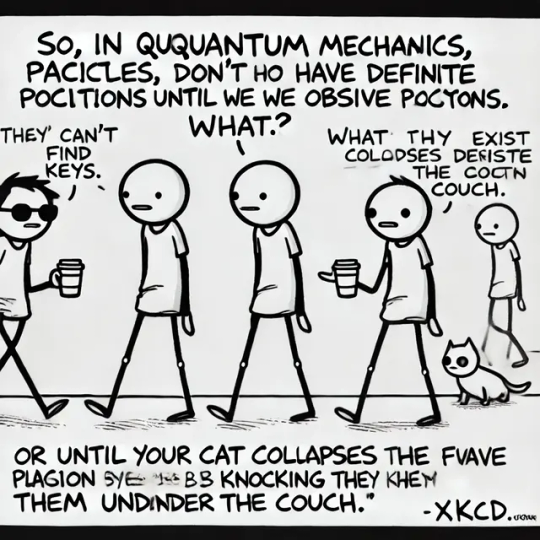
Todays xkcd joke from DALL·E
#dalle#ai fails#funny#fails#fail#artificial intelligence#nonsense#failure#funny fails#funny stuff#funny post#humor#jokes#lol#haha#ai#ai generated#ai art#misunderstandings#misunderstood#xkcd#xkcd.com#source: xkcd#the more you know#quantum physics#technology#physics#science#particles#cat
20 notes
·
View notes
Text

Egypt's Ancient Quantum Temple Network Finally Decoded
Plot twist: The Library of Alexandria was actually a distributed computing cluster 🏛️💚 Pharaoh's IT department has been running flawlessly for 3,000 years while our servers crash daily
#aiart #aigenerated #midjourney #ancientegypt #cyberpunk #quantumarchaeology #temporalglitch
13 notes
·
View notes
Text
Intergalactic travel…
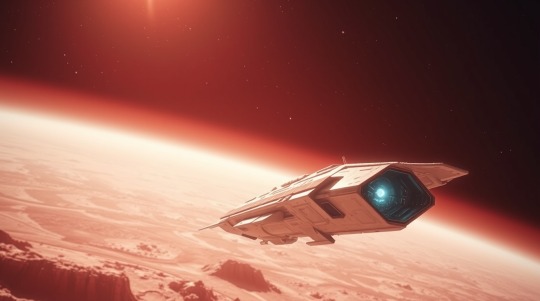
The human dream of reaching the stars is slowly starting to materialize, although we are probably only at the beginning of this path… How can we make it possible to reach unimaginably far during our lifetime and preferably in a relatively short time? Is Einstein's theory of black holes or other "shortcuts" possible? In the face of the current fascination of the scientific world with the extraordinary world of quanta, it seems that really everything is possible…
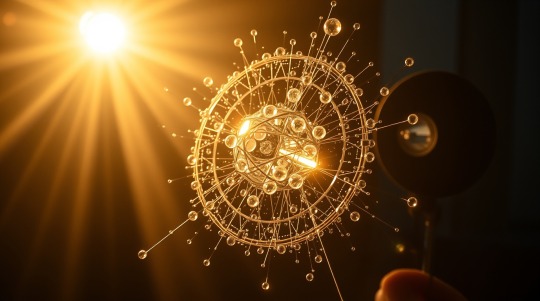
These small particles can be in two distant places at the same time, simultaneously ruining all our previous knowledge about the world that surrounds us. There is also the issue of quantum entanglement, recently popular among quantum cosmologists; entangled objects behave as if time and space did not exist for them. In addition, it has been observed that time is going backwards, quanta can develop in the opposite way to time, e.g. they renew themselves. HERE MORE ABOUT WHY TIME CAN FLOW BACKWARDS. It seems that we do not know much about the world around us, but quanta can shed a completely new light on our knowledge and if they are related to a completely different definition of time, it can also help us in space travel in the distant… or maybe not so distant future?
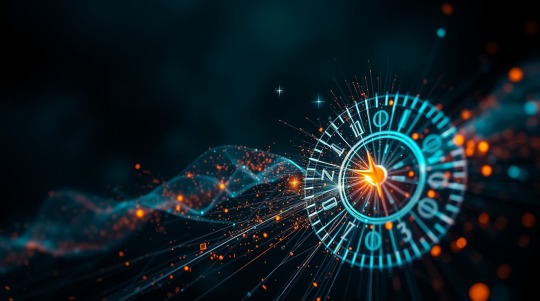
#bandcamp#ai generated#ai artwork#artificial intelligence#ai art#ai#ai gallery#ambient#time#Quanta#quantum physics#in stars and time#outer space#space#planet#astronomy#universe#galaxy#deep space nine#little space#albert einstein#science#luis humanoide#luis#humanoide#spartain#space ship#intergalactic#trip#travel
20 notes
·
View notes
Text
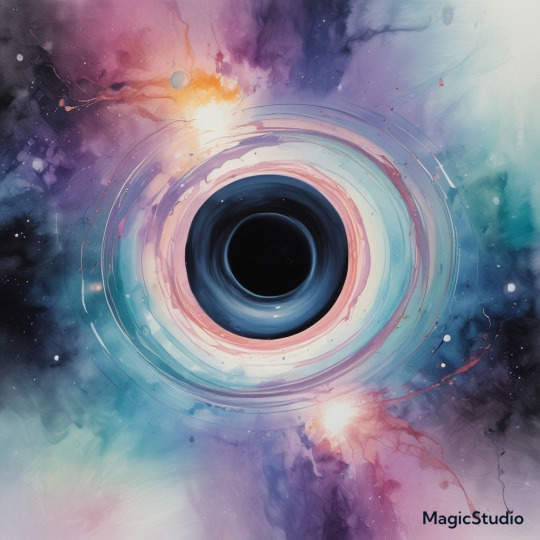
Cosmic Genesis: How Black Holes Might Be Giving Birth to New Universes
The human quest for understanding the universe has led to numerous groundbreaking discoveries, each weaving a more intricate tapestry of our cosmic landscape. A recent theoretical framework, pioneered by Professor Nikodem Poplawski, proposes a revolutionary concept: every black hole creates a new, growing universe inside its event horizon. This idea, rooted in the Einstein-Cartan Theory, introduces torsion to the fabric of spacetime, avoiding gravitational singularities and transforming our understanding of black holes and the multiverse.
By incorporating torsion, the theory predicts that matter within a black hole, instead of collapsing into a singularity, reaches a “big bounce” and then expands into a new, closed universe. This challenges our current understanding of the cosmos, suggesting that our universe is a vast, cosmic nursery, giving birth to billions of “baby universes” through black holes. Each black hole, once thought to be a region of spacetime from which nothing can escape, now becomes a gateway to a new, unobservable universe, raising fundamental questions about the nature of reality and our place within the multiverse.
The introduction of torsion also has far-reaching implications for the long-standing gap between general relativity and quantum mechanics. By violating the linearity of quantum mechanics, torsion favors the pilot-wave interpretation, where particles have definite positions, guided by a wave function. This non-linear aspect of torsion could provide a crucial link in the quantum gravity puzzle, enabling a more unified understanding of the universe, from the smallest subatomic particles to the vast expanse of cosmic structures.
While experimental verification of torsion poses significant challenges, it is not insurmountable. Future astronomical observations of the early universe, utilizing gravitational waves and neutrinos, may uncover the distinctive signature of torsion in the cosmic microwave background radiation. Additionally, cutting-edge particle physics experiments could reveal the extended sizes of elementary particles, predicted by the theory, or the effects of non-commutative momentum in high-energy collisions, providing a tantalizing prospect of empirical confirmation.
The profound implications of Poplawski’s theory, if confirmed, would revolutionize our understanding of black holes, transforming them from cosmic dead ends to gateways of creation. The multiverse, once a topic of speculative debate, would gain a theoretical foundation, with our universe being just one of many, interconnected through a web of black holes. This pursuit of knowledge, even if verification takes decades or centuries, embodies the spirit of scientific inquiry, driving us to push the boundaries of human understanding and illuminating the intricate, ever-unfolding tapestry of the cosmos.
Nikodem Poplawski: The Unknown Revolutionary Theory of Black Holes (This Is World, March 2025)
youtube
N. Poplawski: Big Bounce and inflation from spin and torsion (Gravity and Cosmology, Jagiellonian University, Kraków, May 2020)
youtube
Monday, March 3, 2025
#theoretical physics#general relativity#quantum mechanics#quantum gravity#unified field theory#cosmology#multiverse#astronomy#astrophysics#black holes#gravitational waves#neutrinos#torsion#spacetime#particle physics#theoretical framework#experimental verification#pilot wave interpretation#nonlinear quantum mechanics#interview#ai assisted writing#machine art#Youtube#presentation
17 notes
·
View notes
Text
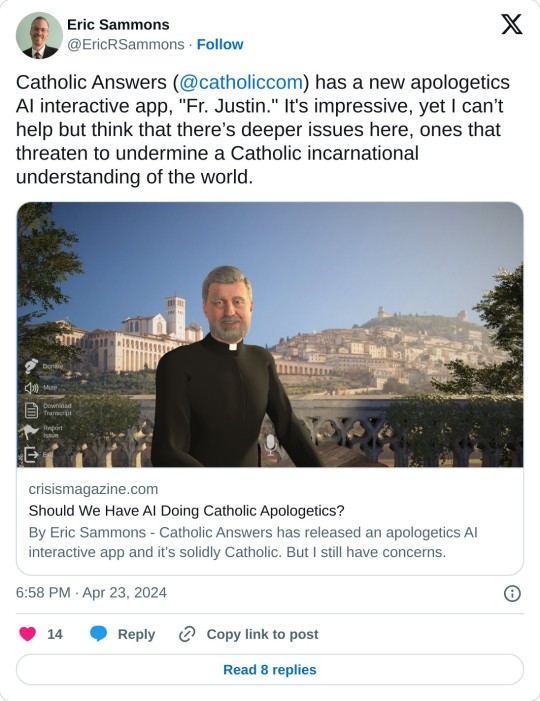
Finally, mankind has an answer to the question "what if you could generate every possible heresy by running through statistically probable and grammatically coherent combinations of words involving the Trinity, Jesus, or salvation, and you could do it with an avatar that looks straight out of Civilization VI?"
#step aside username enumeration#it's time for HERESY ENUMERATION#at least I assume that is what will happen#given how generative AI LLMs work#and the fact that theological formulations about certain matters are like trying to describe quantum bullshit#you CAN do it#with equations or language so highly specific it might as well be an equation#but if you try to rephrase it in normal human words you're going to be at least a little bit incomplete and wrong#if not A LOTTLE BIT incomplete wrong or misleadingly framed
26 notes
·
View notes
Text
Electrical Design Engineer
Job title: Electrical Design Engineer Company: Automation Experts Job description: and you have experience or interest in roles such as Electrical Design Engineer, Control Systems Engineer, Industrial Automation Engineer… and supportive environment. Senior LV Design Engineer £45-55k + Benefits Opportunities for personal & professional development… Expected salary: £55000 per year Location:…
#audio-dsp#Azure#business-intelligence#cloud-native#data-science#DevOps#edtech#embedded-systems#generative AI#GIS#hybrid-work#insurtech#iOS#Java#NFT#NLP#project-management#proptech#QA Automation Engineer#quantum computing#regtech#remote-jobs#robotics#scrum#SEO#site-reliability#technical-writing#ux-design#vr-ar
2 notes
·
View notes
Text
How to Make - Operate -- Quantum Computers Pt 1
Futuristic Quantum Computing with instructions!

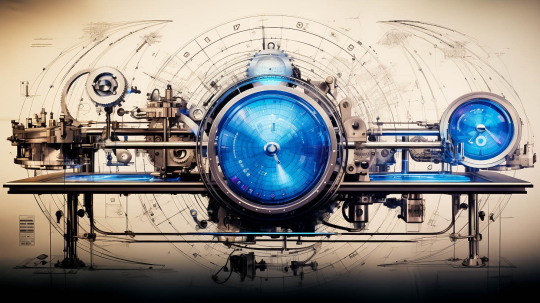

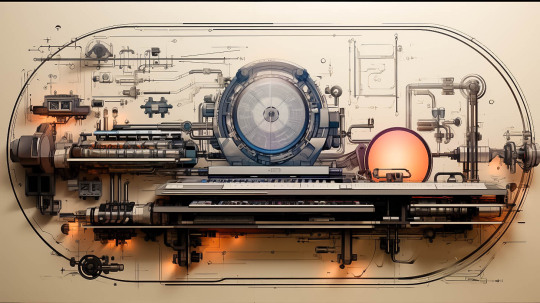
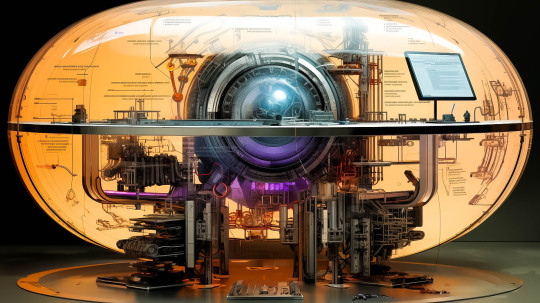

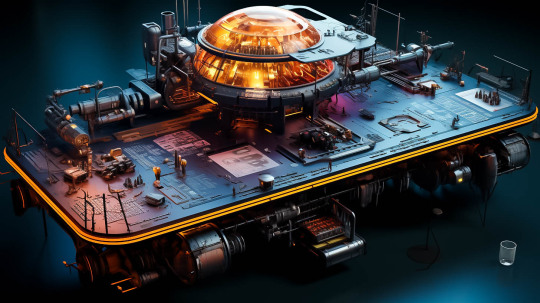


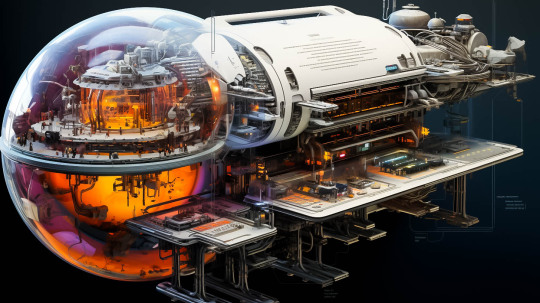
#quantum computing#schematics#blueprints#aiartwork#midjourney#diagrams#diagram#yan61#YAN61#image prompt#computer design#ultimate computer#ai artwork#generative art#futurism#space computer
65 notes
·
View notes
Text

Robots aren’t just sci-fi anymore—they’re HERE, reshaping industries & society. From AI assistants to factory bots, the future is now. Dive into the revolution: quantum2077.com/rise-of-robots-revolutionary-game-changer/
2 notes
·
View notes
Text

Polyalloy Pathways
(Part 1)
After an unceremonious arrival in a post-apocalyptic timeline where Skynet successfully launched its nuclear holocaust, Casse the T-XA patiently waited in the shadows of the ruined city until dusk amongst the destruction, in an attempt to locate the positions of certain stars and other astronomical objects in the night sky.
Armed with a copy of the chrono-spatial co-ordinates that were programmed into the time displacement equipment from the timeline he departed from, Casse had no way to determine if the equipment was accurate and if he had ended up in the right place, at the right time. Being able to determine this would be of great use to his current, self-imposed mission.
Unfortunately, the sheer volume of smoke, haze and smog from the beginnings of a nuclear winter thwarted his multiple attempts, even with his boosted and enhanced visual sensors. Casse then loaded up secondary methods, picked the one which was the most accurate but still was still much less accurate than using astronomy and astrophysics, but could be useful to some extent, but Casse really had no other choice.
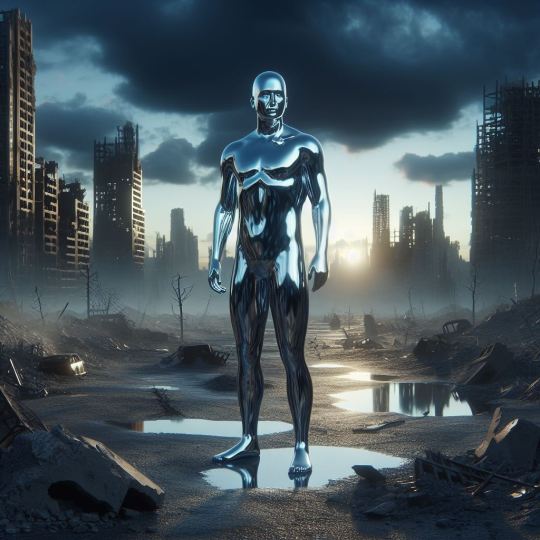
Scanning the ruins of the buildings directly around him, Casse compared them to the files he had of the current city from a timeline when Judgement Day had never actually happened, comparing the ruined husks to what they would have looked like only a few short months ago, and after a few seconds he arrived at a 90% confidence rate this was the correct place, and that the circular error probable rate of the spatial location chrono-teleportation was a surprisingly minimal 10 metres. This was more accurate than the ICBMs Skynet had launched in what appeared to be only a few months prior to his arrival.
Radiation sensors built into his highly advanced next-generation mimetic polyalloy confirmed that, based on background radiation readings of various isotopes, Judgement Day had occured between and 4 and 6 weeks prior, and that surviving humans would be few, but buried deep underground in relative safety.
Casse could only hope Julian was one of them, as locating him was of the utmost importance to his mission. And, he had a good idea where to start to look.
The one tonne of liquid metal then emitted creaking and slurping noises as started to melt down into a pool of shimmering silvery blue liquid metal, spilling onto the ruined roadway. It twitched, and after a few seconds, three humanoid shapes rose up from the puddle, and molded themselves into faceless featureless humanoid shapes. Not one drop remained on the road.

Even in this split state, each of Casse's components was roughly equal to Skynet in intelligence, and he was the most superior and intelligent creation to ever walk on this earth. But Casse didn't consider that. He didn't need to. He already knew.
Thanks to the esoteric nature of his 2nd generation liquid metal, each of Casse's components remained connected in a giant mesh network through the quantum foam, so his hive mind remained connected at all times in a giant electronic network of higgs-boson particles and other exotic quantum mechanical phenomena. Again, Casse didn't need to consider this. He had a rather peculiar human to locate.
The three liquid metal components remained in their shimmering form. There was no need, at this stage, to waste resources and morph into a proper human appearance. Silently, they walked off in different locations to comb the wreckage for clues of human habitation and a certain underground room Julian was hopefully sheltering in. It was time to get to work, and the less time spent in this hellish almost alien-like landscape the better.

#casse the t-xa#t-xa#mimetic polyalloy#patronizing junk heap#casse on a mission#liquid metal#time displacement equipment#julian#txa#t xa#tx-a#time travel#quantum foam#quantum mechanics#liquid metal terminator#superior technology#self aware#ai#ai generated art#split in the timeline#specifications - self#polyalloy pathways
12 notes
·
View notes
Text
Creative marketing with the help of 3D Template Design
What Is 3D Template Design?
A 3D template is a pre-designed 3D model or layout that can be customized for branding, product presentation, or promotional content. These templates can be used in videos, interactive web elements, social media, AR.

GET FREE DESIGNING TOOLS (FOR STUDENT ONLY) 👈.
This is the process of creating the 3D geometry of your object, character, or environment. Polygonal Modeling: Creating objects using polygons (vertices, edges, and faces). This is the most common method for hard surface objects and characters. Spline Modeling: Creating shapes based on curves and then defining their thickness or depth. NURBS (Non-Uniform Rational B-Splines): For smoother surfaces, often used in automotive and industrial design. Sculpting: Involves pushing and pulling digital clay, commonly used in organic models like characters, creatures, or detailed objects.
IMPORTANT TOOLS AND SOFTWARE FOR DESIGN
Blender: Free, open-source software known for its versatility in modeling, animation, and rendering.
Autodesk Maya: Used widely in animation and visual effects. It excels at polygonal modeling, rigging, and animation.
3ds Max: Similar to Maya but often preferred for architectural visualization and game asset creation.
ZBrush: Specialized in digital sculpting, ideal for creating highly detailed organic models like characters.
Cinema 4D: Great for motion graphics and 3D modeling with a user-friendly interface.
SketchUp: Simple tool used mainly for architectural modeling.
#light particles#quantum jumping#quantum mechanics#quantum physics#subatomic particles#3d image#3d printing#3d image design#banner design#image archive#3d object#3d object creation#3d ai image creation#ai image editing#ai artwork#ai generated#ai art#ai image#ai model#artificial intelligence#3d banner design#3d model#animation#3d animation#ai image generator#3d ai image#ai image creation#ai video
1 note
·
View note
Text
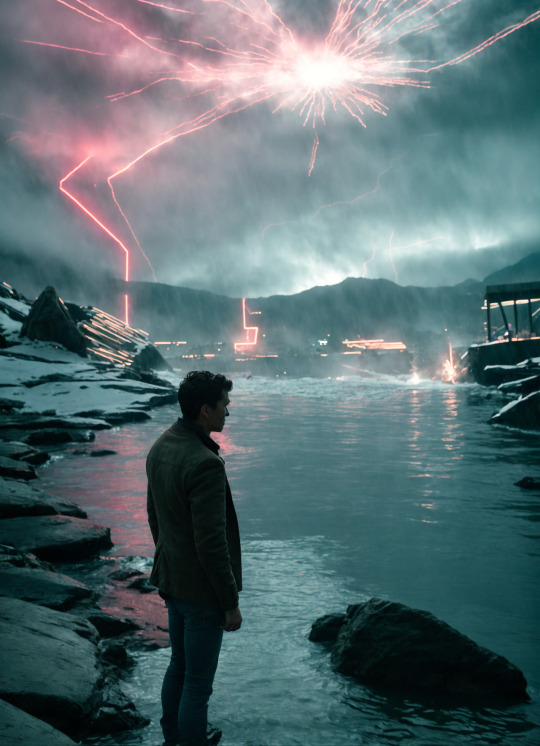
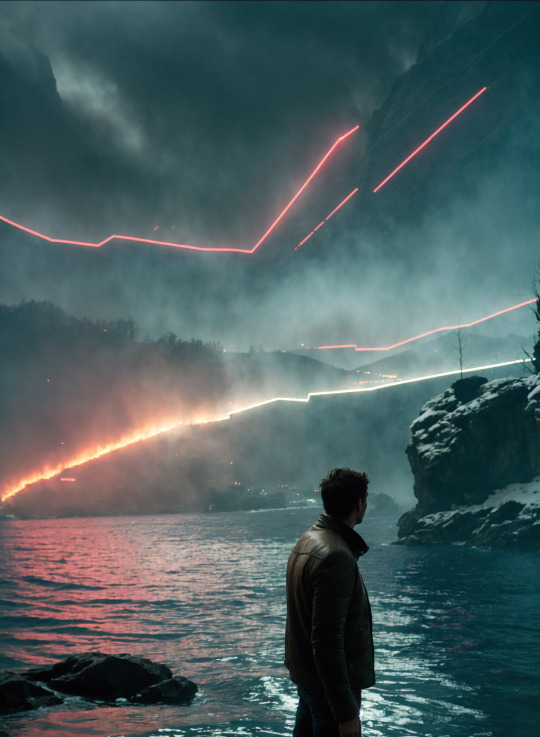

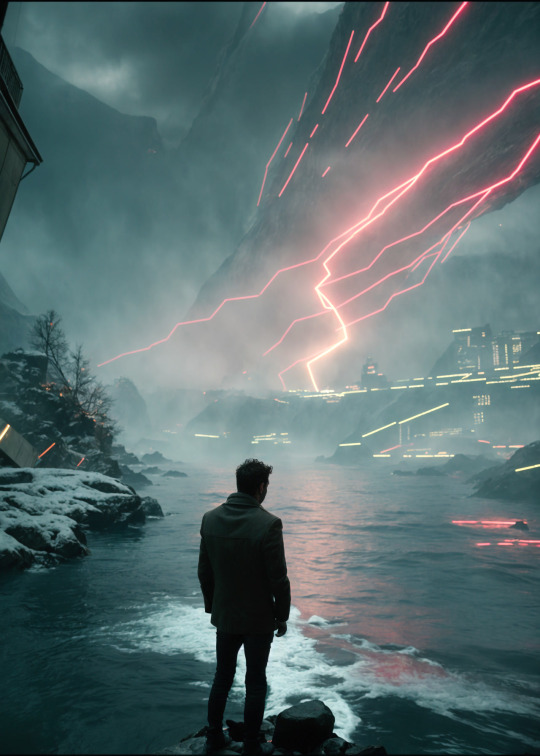
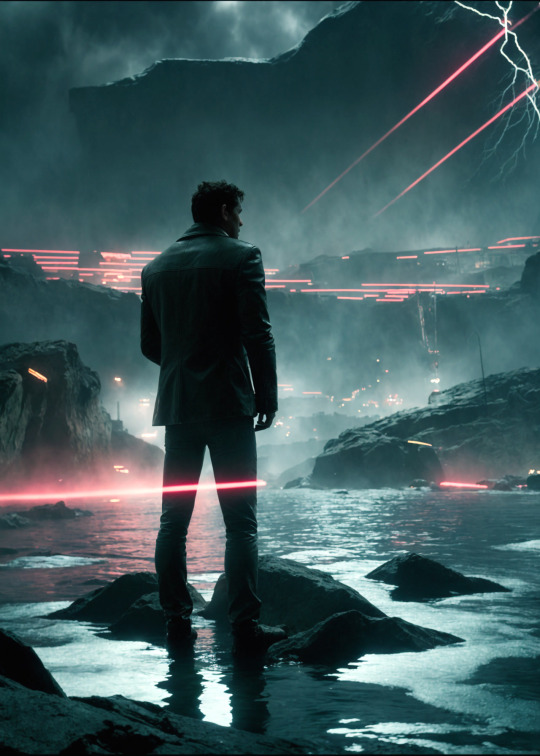
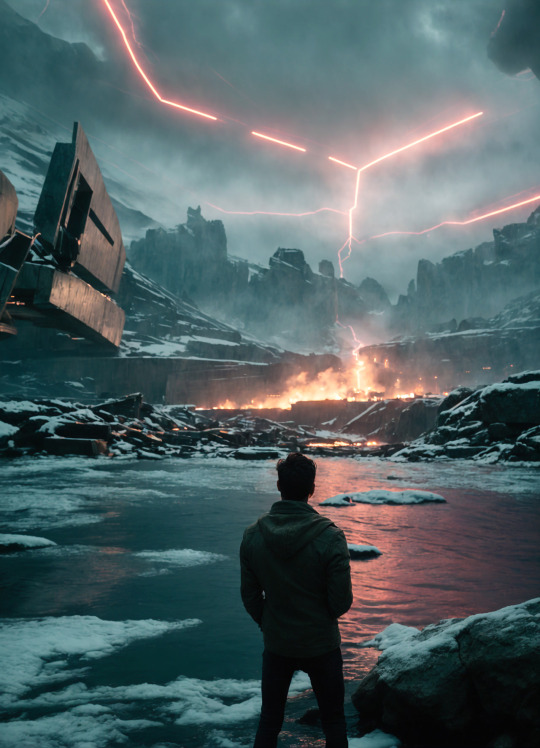
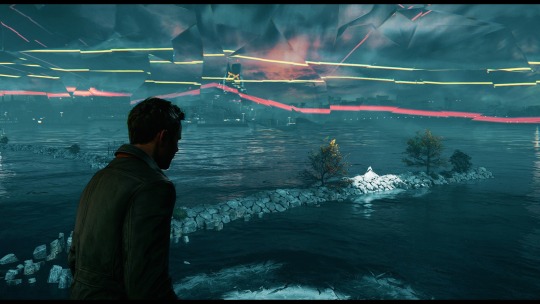
#ai generated#ai image#ai photography#stable diffusion#landscape#virtual photography#quantum break#remedy games#remedy entertainment#jack joyce#lake#shore#scattered reality#scattered#night#nighttime#lightning#rocks#water#neon#eerie#weird#cloudy#misty#mist
1 note
·
View note
Text
I've said on FB before, but I think the current discourse around AI proves that if Detroit: BH happened IRL, nobody would be on the androids' side.
#detroit become human#ai art#ai#quantum dream#ai generated#That game makes no sense anyway#Connor is a complete moron#fucking pigions#artificial intelligence
5 notes
·
View notes
Text


Picture this: A bridge, an Occult Bridge, stretches across a chasm that defies earthly logic. Its arches curve like the ribs of a cosmic serpent, and upon its surface, Fractal Geometric Patterns dance—a symphony of sacred geometry. These patterns ripple and twist, tearing the fabric of reality itself. Step upon this bridge, and you tread upon the threshold of other dimensions.
#quantum mechanics#complex architecture#surrealism#steampunk#crystals#rose quartz#amethyst#obsidian#diamond#gold#graphic art#graphic design#ai generated#ai artwork
6 notes
·
View notes
Text

6 notes
·
View notes
Text

Gravity’s Quantum Nature: Uncovering the Secrets of the Hierarchy Problem
One of the most influential theories of gravity is general relativity, proposed by Albert Einstein in 1915. According to this theory, gravity is not a force acting between objects, but rather a curvature of spacetime caused by the presence of mass and energy. This curvature affects the motion of objects, causing them to follow curved paths, which we experience as the gravitational force. General relativity has been incredibly successful in predicting the behavior of gravity in a wide range of situations, from objects falling on Earth to the bending of light around massive objects.
However, general relativity also has its limits. One of the greatest challenges for modern physics is the hierarchy problem, i.e. the enormous discrepancy between the strength of gravity and the other fundamental forces. The hierarchy problem arises from the fact that the force of gravity is much weaker than the other fundamental forces, such as electromagnetism and the strong and weak nuclear forces.
The strength of the gravitational force between two objects is determined by the product of their masses and the gravitational constant G. However, the strength of the other fundamental forces is determined by other constants, such as the fine structure constant for electromagnetism and the Fermi constant for the weak nuclear force. The hierarchy problem arises from the fact that the gravitational constant is much smaller than the other fundamental constants, making gravity much weaker than the other forces. On the scale of atomic nuclei, where the strong and weak nuclear forces dominate, the gravitational force is completely negligible. However, on larger scales, such as the scale of galaxies and galaxy clusters, gravity becomes the dominant force, shaping the large-scale structure of the universe.
The hierarchy problem poses a major challenge to modern physics because it is difficult to explain why the gravitational constant is so much smaller than the other fundamental constants. One possible solution to the hierarchy problem is the idea of extra dimensions, which assumes that the gravitational force is not a four-dimensional force, but a force acting in higher-dimensional spaces. This idea is supported by theories such as string theory and the Kaluza-Klein theory.
In their research, Claudia de Rham and her colleagues have examined the implications of massive gravity theories for our understanding of the hierarchy problem. Massive gravity theories assume that gravity is not a massless force, but rather a force mediated by a massive particle, the graviton. This idea has been shown to provide a consistent and well-defined description of gravity in the infrared range, the range relevant to our everyday experience. In addition, de Rham's research has also examined the implications of massive gravity theories for our understanding of the large-scale structure of the universe. By analyzing data from the Sloan Digital Sky Survey and the cosmic microwave background radiation, de Rham and her colleagues have shown that massive gravity theories can provide a good agreement with the observed data while solving the hierarchy problem.
Research by Claudia de Rham and her colleagues has shown that theories of massive gravity can provide a consistent and well-defined description of gravity in a wide variety of situations.
Claudia de Rham: The Woman Who Broke Gravity (Curt Jaimungal, Theories of Everything, August 2024)
youtube
Sunday, October 6, 2024
#gravity#hierarchy problem#general relativity#massive gravity#theoretical physics#cosmology#spacetime curvature#fundamental forces#quantum gravity#black holes#gravitational waves#dark matter#interview#Youtube#ai assisted writing#machine art
2 notes
·
View notes